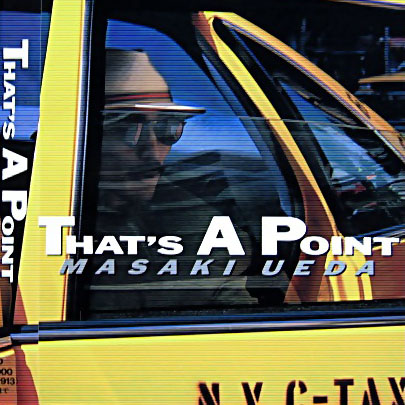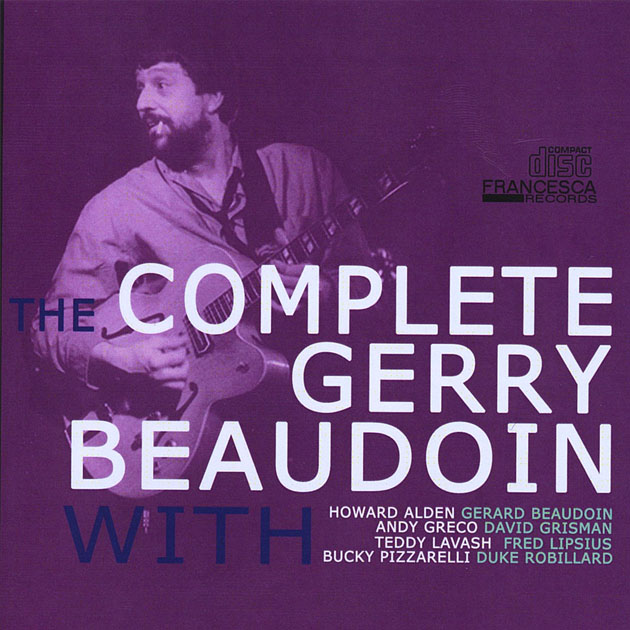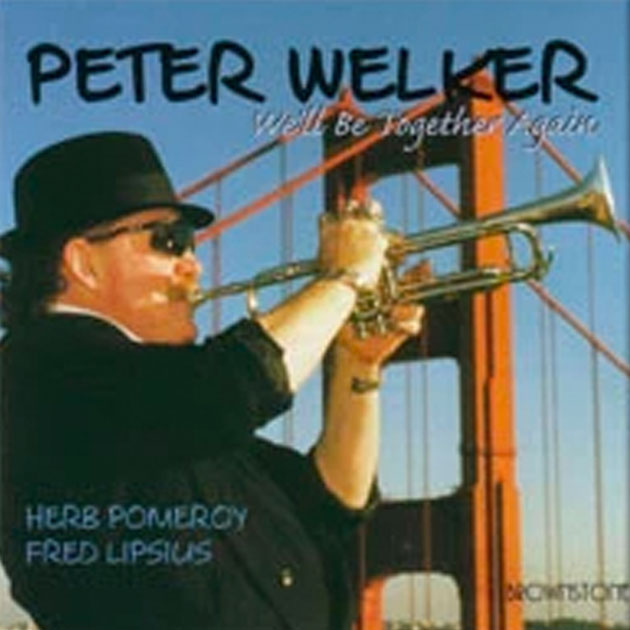OTHER ALBUMS | RETURN TO MAIN MUSIC PAGE >>
My Masaki Ueda CD Recording Experience

I wrote all the horn charts for this CD.
"That's All I Wanna Do"
In October 1993 I got a call to do some arranging work for Dave Matthews, a top-notch New York producer/ arranger. He was the leader/pianist of The Manhattan Jazz Quintet, a band that was very "hot" in Japan. The musicians - Dave, Eddie Gomez, Steve Gadd, Lew Soloff and George Young - were selling lots of CDs for Sweet Basil, a Japanese Record Company. Dave had been back and forth, many times, between Japan and New York doing projects with his friends at this record company. As the producer for a new CD by popular Japanese singer, Masaki Ueda, Dave called me to write the arrangements. I accepted. But the recording sessions were only two weeks away down in New York City, giving me a short amount of time to complete a whole CD’s worth of charts.
Remembering my days with BS&T, I was generally slow at turning out arrangements, never having developed an efficient system for myself. My approach to creating a chart back then consisted of two things: writing 'from the heart' and trying to create 'original' (not copied) ideas, which is not easy to do! In the process of writing a chart, I sometimes got too emotional about the music, or just had too many ideas that I liked, which made it hard for me to choose the best ones. There were also times, when I probably created my own blockage/stress by thinking about the fact that our last BS&T album sold a million copies and “lots of people” out there were going to hear my next creation! Except for a brief period of studying arranging at Berklee School of Music (1961-62), I was pretty much self-taught. Although I had written charts for other people and lots of 3-horn charts as an Ensemble Department teacher at Berklee, I still had doubts about my ability to write top-quality arrangements quickly.
Dave sent me very good sounding 'demos' of the tunes I was to arrange. They had some synthesizer sounds on them. In order to complete this project I had to be very time-efficient. I wrote a new 4-horn chart each night in my office at Berklee. That was after a full day of teaching at the college followed by a rushed restaurant dinner. My method for writing the charts was this: using a Walkman cassette recorder set on top of the electric piano, I recorded/played possible horn parts at the electric piano while listening to the demo tape being played through my office speakers. I set the cassette volume at a level that would allow me to clearly hear my piano playing (the potential horn parts) over the demo volume. When I chose my final horn parts from listening back to the various versions I had played on the cassette, I notated them in concert key on 2 staves - treble & bass clef. Then, when I got home, I neatly copied out the individual horn parts onto separate staves of a score in preparation for professional copyists in New York City to copy the parts from my concert score. I got very little sleep each night... What was incredible to me during these 8 or 9 nights that I remained 'true' to this work schedule, was that I had a pretty bad case of the flu! I really felt like I should stay in bed and not teach or do anything. But this was a great opportunity for me, and I was determined to complete these charts and do a great job!
When I got to Dave’s apartment in New York, he looked over my work. The next morning, we brought the music to the copyists. I hadn’t touched my alto for over a week and, in two days, was going to play in the horn section for this CD with some of the best players on the planet. They did this kind of work all the time and Fred didn’t! I was allowed to stay and practice my horn in the copyists office after they all went home from work. I practiced for a while, and then I got a unexpected phone call from Dave telling me that Japan had just sent him one more demo tune! He asked me to write a horn chart for it that night! I couldn’t believe it, but I figured I had gone this far so I’d give it a try... The speakers and piano were in adjacent rooms! So I had to play the demo through speakers in one room, quickly run into the other room where the piano was, and record some horn lines onto my cassette! This was total craziness. Thank goodness the chart came quickly - first or second try. I transcribed the horn parts off my cassette machine and I left the towering Manhattan office building heading back to my hotel a few blocks away. The bright morning sun was coming up (this was like a strange movie scene, and I was the actor). I was totally 'gone'- wiped out. But I had finished the job and had jumped over and beyond a large hurdle from the past. I now had the confidence that, if I had to, I could write a good sounding chart in a hurry!
I had a day free before the rhythm section recording session. The morning of that session, I went to see a doctor. I was still feeling the lingering effects of the flu or whatever it was I had. I was told that my condition wasn’t anything serious - not to worry about it, although I felt strange. At the session, I met Paul Shaffer, who, if I remember correctly, was about to become a Daddy! He was pretty quiet at first, but later, on a break, he opened up and reminded me about a BS&T concert in Toronto that he saw. He said that someone announced to the audience that Fred Lipsius’ horn had gotten broken. In spite of that, I had done a great job of improvising parts on electric piano, standing up.
The following days were the horn sessions. I got to play with my friends, great musicians, and hear my charts played as good as one could imagine. Randy Brecker had just gotten back from Malaysia (a long trip) and here he was in the studio having to play my charts, which weren’t easy! I wrote these charts very inspired by the fact that I knew who the players were going to be and that they could play just about anything! Before we recorded, I noticed Randy looking over one of his parts and, at first attempt, having a little trouble trying to play a fast ascending, descending minor pentatonic scale line. It probably didn’t lay very well on the trumpet in that key. Just to have some fun with him, right after he played it I ran right up and down the line effortlessly! He looked at me a little funny for a second. I laughed and told him, “It’s easy on sax.” But it made me feel good knowing that I could play at least one lick as well as the other players there! One of the parts I wrote for the saxophone had a difficult rhythm that I couldn't play. Rather than wasting time in the studio, I simply switched parts with Trombonist Jimmy Pugh, who played the part perfectly the first time through. There was also a fast bluesy sixteenth note run I had written in unison for the horns. Lew Soloff’s lead trumpet part was notated an octave up, putting him in a range that reached 'A' above high C. He looked at the part and, with a tone of seriousness, said, “Freddy, I can play this part one out of fifteen days, and today ain’t the day!” He kept on, by saying, “I’m not a high-note specialist, you know.” I chucked at him and replied, “If you’re not, I don’t know who is!” Of course, he nailed the part! Way back, in the days we were in BS&T, he told me that if I don’t write challenging things for him it’s no fun! So that’s what I did!! I sometimes have a tendency to over-write for the horns. This project was no exception. Dave, as the Producer, felt like the horns were being used too much on the CD, so he took out parts here and there to allow for some breathing space. He even omitted a few of my horn charts completely, without even listening to us play through them once. Lew Soloff couldn’t believe my reaction to this - of me totally accepting Dave’s decision without saying a word. It really didn’t bother me because most of the work I did was appreciated and used. Dave had originally told me to write horn arrangements for whichever tunes on the demo I felt horns would be good on. I picked them all! After the session, Lew and I shared a brief taxi ride together. Before saying goodbye, he told me, very sincerely, that he loved every note that I had written for the horns, and that I had developed into a top-notch arranger. That was a big compliment coming from a man who has played just about everybody’s music!
Masaki Ueda came to New York to record his vocals. After his sessions, Dave invited me to have dinner at a Japanese restaurant with him, Masaki and some of the record company people. My wife, Setsuko, who had joined me in New York, was also invited. She and Masaki are from an area in Japan where the people speak a similar dialect. In the restaurant, I was seated sandwiched between my wife on my left and Masaki on my right. Directly across from me was Dave. During our meal, Masaki and my wife conversed a lot through me (as if I weren’t there). I looked over at Dave, who had his fair share of saki, and asked, “Do you understand what they’re saying?” Smiling, he said, “Not a word!” We both laughed. Dave had previously mentioned that he had been seriously studying Japanese at the Berlitz School in New York for a number of years. My wife heard him speak some Japanese and told me he spoke the language pretty well. I also had heard him speak with some of his record people friends at the sessions. But tonight, all his studying was useless! Maybe they just spoke too fast for him. Heading back to our hotel, my wife and I shared a cab with Dave. His apartment was first on the way. As he got out of the cab, I realized that he had totally forgotten to pay me for the charts I wrote! So we all went back to his apartment and he gave me a check for my work. We thanked him for everything and left. Shortly after that, Dave helped me get a record deal with Sweet Basil. That was my "Better Believe It" CD.
"Better Believe It"
DISCOGRAPHY
Fred Lipsius Albums
Only Love Exists
Pure Classics
Dreaming of Your Love
Better Believe It
When Love Enters Your Heart
Blood, Sweat, and Tears
Child is Father to the Man - Columbia KCS 9619
Blood, Sweat & Tears - Columbia CS 9720
Blood, Sweat & Tears 3 - Columbia KC 30090
B.S.& T. 4 - Columbia KC 30590
Blood, Sweat & Tears Greatest Hits - Columbia KC 33170
The Best of Blood, Sweat & Tears:What Goes Up! - Legacy/Columbia C2K64166
The Owl & the Pussycat - Columbia S30401 (Original Soundtrack Recording)
Playing/Arrangements/Featured on:
Encuentro En New York: Jorge Lopez Ruiz - Chango CHL-12002
When You Feel the Love: Rodney Jones - Timeless SJP152
Soul of a Man: Al Kooper - Music Masters 01612 65113-2
Sentimental Over You: Gerry Beaudoin and the Boston Jazz Ensemble - North Star Records
A Sentimental Christmas: Gerry Beaudoin and the Boston Jazz Ensemble - North Star Records
Complete Gerry Beaudoin - Frencesca Records
Dancing in the Mystery: Rebecca Williams - SRR10012
That’s A Point: Masaki Ueda - PICL-1057
Para Peachy: Peter Welker - TO-002 (Take One Records)
We’ll Be Together Again: Peter Welker - Brownstone BRCD 9902
Stop Handgun Violence - Rounder Records 11661-9052-2
The Hero In Us All: Jack Scarangella
Expansions in Quiet Places: Dac Thien Quyen
Recording with BS&T Drummer, Jack Scarangella

I arranged these 4 tunes and composed and played piano on "Cowboy Song" and "Trippin' On the Stars".
"Cowboy Song"
"Midnight Cowboy"
"Trippin' On The Stars"
"What A Life"
Award-winning Guitarist Gerry Beaudoin

I played alto sax on "A Train" and "Lover Man" and piano on "If I Should Lose You".
The following is from Gerry's Liner Notes: "Fred is simply the best musician I have ever played with. Whether on alto saxophone or piano he delivers the goods every time. His recordings with Blood, Sweat and Tears are still favorites of mine today. He is a very spiritual person and has had a positive influence on my personal as well as musical life."
"A Train"
"Lover Man"
"If I Should Lose You"
An Eclectic Mix of Jazz, R&B and Salsa

I played the alto sax solos on these tunes.
"Para Peachy"
"Europa"
Peter Welker: We'll Be Together Again

